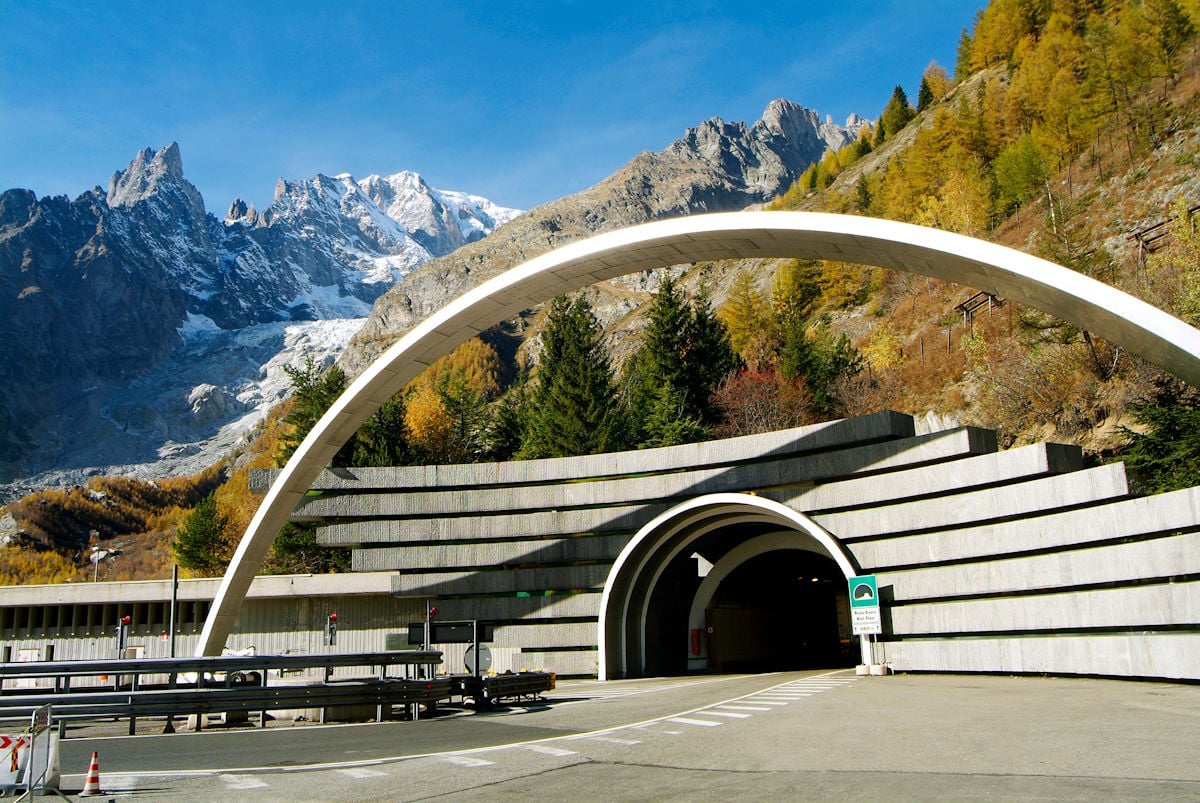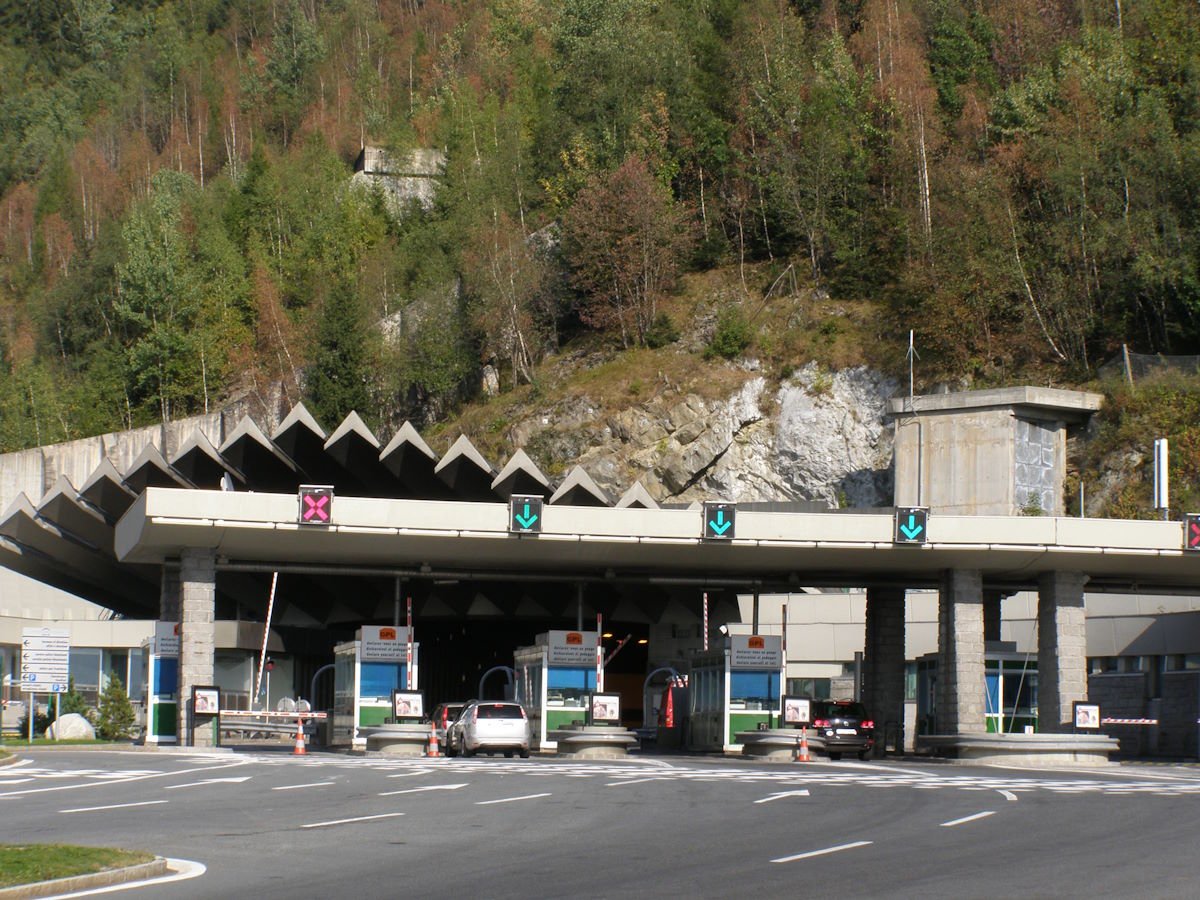by Florian König, maut1.de - 06 February 2024, updated on 5 September 2024
One of the most important road links between France and Italy, the Mont Blanc Tunnel, will be completely closed for several months at a time over the next 18 years and undergo a thorough renovation. Find out what this permanent construction site means for travellers between France and Italy and what alternative routes are available in this blog article.
Opened on 19 July 1965, the 11.6 km long Mont Blanc Tunnel is used by an average of over 1.5 million vehicles per year (around 2/3 cars and 1/3 lorries) and is expected to be used by over 2 million vehicles by 2023. The single-tube Mont Blanc Tunnel connects Chamonix-Mont-Blanc in the French department of Haute-Savoie with Courmayeur in the Italian Aosta Valley and thus represents an important link between Geneva and France via the A40 on the west side and Turin and northern Italy via the A5 on the east side.
Originally, the Mont Blanc Tunnel was supposed to be completely closed to road traffic and renovated for a period of three to four years after 60 years of use. However, the two tunnel operating companies ATMB (Autoroutes et tunnels du Mont-Blanc) on the French side and SITMB (Società Italiana per azioni per il Traforo del Monte Bianco) on the Italian side have decided against this due to the importance of the central infrastructure node and are instead planning the renovation with shorter closures of three to four months each for the next 18 years.

Mont Blanc Tunnel: New closure in autumn 2024
The first complete closure of the Mont Blanc Tunnel for extensive refurbishment ended on Friday, 15 December 2023. During this first construction phase, fans in the tunnel were replaced in addition to panel elements in the tunnel walls.
Until September 2024, travellers were able to travel freely through the Mont Blanc Tunnel again.
The next complete closure has been in place since 2 September 2024 and is expected to last until 16 December 2024 at 5 p.m. in order to complete the preparatory work for the planned general renovation of the toll tunnel over several years from 2025.
Alternative routes during the closures
Travellers have the following options for avoiding the closure of the Mont Blanc Tunnel during the planned closures, depending on the respective start and destination area for the journey:
- via the Fréjus tunnel further south,
- via the Great St Bernard Tunnel to the east,
- and over the nearby small St Bernhard Pass. However, like most pass roads, the pass is only open until the onset of winter (around the end of October).
Please check the operator's website for the latest traffic reports and any traffic obstructions, e.g. roadworks, in good time before starting your journey!
Fire inferno in the Mont Blanc tunnel in 1999
The first bores for the Mont Blanc Tunnel were drilled in 1959 following the conclusion of an agreement between France and Italy on the construction of a tunnel, and the breakthrough for the single-tube road tunnel with one lane in each direction took place in 1962. The tunnel has been in operation since July 1965. Plans for the construction of a second tunnel tube failed due to funding and opposition from local residents.
The Mont Blanc Tunnel became tragically famous on 24 March 1999 when a refrigerated lorry loaded with margarine and flour caught fire in the tunnel. Thirty-nine people died in the flames because the safety systems did not function as intended and communication between the French and Italian sides, with the Mont Blanc tunnel split down the middle, did not run smoothly. The Mont Blanc tunnel subsequently had to remain completely closed for three years for refurbishment.
Current traffic information on the Mont Blanc Tunnel can be found on the joint website of the two operating companies SITMB and ATMB.

By the way: Road tunnels are generally designed for a service life of 100 to 130 years. And what happens when they have reached their maximum age? Then they are usually kept in operation; constant maintenance and refurbishment allow them to continue operating well beyond the 130-year mark. Some railway tunnels in Germany are already a good 180 years old and still fully functional.


.webp?ts=1719437796)